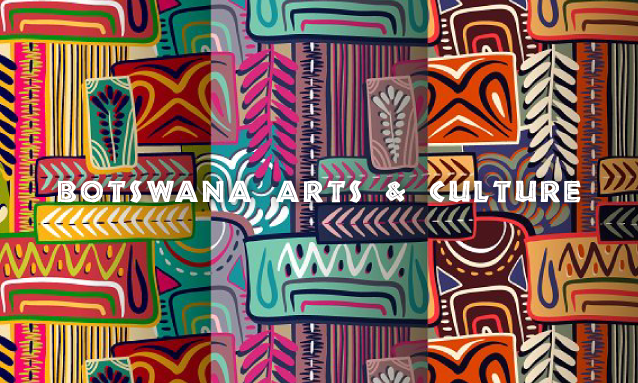
Botswana has made peace with the fact that diamonds really aren’t forever, and as such, recognises the need to find various means of diversifying the economy. Already a big safari destination, Botswana has been looking to its rich culture as a tool with which to promote cultural tourism, a springboard from which to diversify the economy.
Botswana is not only rich in flora and fauna, but also various cultures that can be used to market the country as a tourist destination of choice. To tap into this opportunity, Botswana has taken the deliberate decision to repackage various cultural festival/activities such as the vibrant music, dance, poetry and storytelling around the country to make them more appealing to both locals and tourists. There are also cultural villages, local food, arts and crafts markets, art galleries and museums as well as the warm, friendly people of Botswana with whom to converse and learn more about the country.
In this article, we list 10 such activities you can explore and enjoy in Botswana, whether as a visitor or a local.
1. Cultural Tours
Botswana has a diversity of vibrant and colourful cultures just waiting to be explored. This is an excellent way of seeing authentic village life and interacting with Batswana. More and more safari operators are including village tours in their offer. Examples are a visit to the Yei villages on the fringe of the Okavango Delta, a Tswana village in the Tuli area and walks with the Bushmen, the first people of Botswana, in the Kgalagadi or Makgadikgadi.
2. Basket Weaving
Botswana baskets, most of them made by the Hambukushu and Bayei women from the Okavango area, are among the world’s finest. Thanks to their high quality, outstanding workmanship and originality, they are now world-renowned owing to the fact that they are exported to many countries around the world.
Many of the designs depict the traditional life and often include symbolic representations of nature and wildlife as well as abstract geometrical patterns. The National Museum in Gaborone stages annual National Basket Exhibitions at which some of the year’s best work is displayed.
3. Pottery
Three of the oldest pottery factories – Thamaga, Gabane and Notwane – are located near Gaborone. Others can be found in Maun, Serowe and Kanye. Each has distinctive designs; some depicting Botswana’s rich culture, while others have a modern slant. The products are beautifully made and are available to buy.
4. Woodcarving
Botswana’s woodcarvers are spread across the country and are skilled at making some of the most gorgeous human and animal figurines, kgotla chairs, walking sticks, traditional musical instruments, furniture and wooden kitchen utensils. Some of them also make stunning ladies’ accessories such as bangles, jewellery and neckpieces made out of wood and colourful beads. Luckily for avid shoppers, these items are sold in many hotels, lodges and curios gift shops.
Factories known to produce various wooden items are the Serowe Woodcarvers, Camphill (Otse, about 55 minutes by car from Gaborone) and Gantsi Crafts.
5. Leather Crafts
Traditionally, Batswana used to use animal skins to make clothing, blankets, sleeping bags and mats. Whenever an animal was slaughtered, virtually nothing went to waste because the people found a use for everything! While Batswana no longer wear traditional leather clothes, Botswana has commercial leather factories that produce items including genuine leather handbags, belts, shoes (mainly sandals) and satchels.
Pilane Leatherworks outside Mochudi is the most well known factory and is open to visitors and shoppers. For those able to visit Gaborone, leather products of this type can be found lining the walkway of Gaborone’s Main Mall in the city centre.
6. Folklore
Batswana has a rich oral heritage of poems, proverbs and folklore that has been passed down through the generations and doesn’t show any signs of fading away in 21stcentury Botswana. Often, a poet or a group of traditional dancers often punctuated by the melodious ululating of women will open festivities. I must point out however, that the ululating is rather like Marmite for different visitors! You just have to experience it for yourself to make up your own mind.
7. San Crafts
The San or Bushmen as they are sometimes referred to, are the first people of Botswana. Their presence in the Kalahari can be traced as far back as the Middle Stone Age. The San’s natural artistic flair is evidenced by the hundreds of thousands of beautiful rock paintings found across Botswana. The modern San produce a wide range of unique arts and crafts, many of them deriving from the hunter-gatherer tools they used over the years for survival.
These include hunting sets, digging sticks, fire-making sticks, leather shoulder bags and pouches as well as traditional music instruments. They also make stunning ornaments and jewellery pieces. San beadwork is exquisite; making use of imported beads to produce gorgeous necklaces, bangles, earrings, headbands and other accessories. The products they make often feature ostrich eggs shells.
San crafts are mainly found at BotswanaCraft (Gaborone) and Gantsi Crafts (Ghanzi).
8. Performing Arts
In recent years, Botswana’s dance, music and theatre groups have exploded up and down the country. Virtually all ceremonies and events include various aspects of Botswana’s rich cultural song and dance, all of which are the result of the country’s diverse tribal cultures. The high energy dance routines are performed to equally exciting music characterised by singing, hand clapping, drum beating, whistles and the ever-present ululating. Popular dance troupes include Mafitlhakgosi, Mophato Dance Theatre and Dikakapa.
Two of the country’s biggest traditional dance events are the Kuru Dance Festival held annually just outside Ghanzi and the Domboshaba Dance Festival also an annual event held in the Francistown area.
The Maitisong Cultural Centre at Maru-a-Pula School in Gaborone is a regular venue for classical, pop, jazz, rock, choral as well as traditional and contemporary African music and dance and theatre performances. Its annual festival, held in March or April features performances from Botswana and other African countries. The free street shows pull together new and seasoned performers for a celebration of African song and dance. Other venues of interest for regular performances are BotswanaCraft, Alliance Français and The Ladies No 1 Opera House.
9. Contemporary Art
There’s no end of talent in Botswana as far as contemporary art is concerned. Local and expatriate artists skilfully produce pieces inspired by Botswana’s stunning scenery and wilderness. Wilson Ngoni, whose work has to be seen to be believed, is just one example of incredible local talent! He has a Facebook page through which he displays his amazing work.
The National Museum and Art Gallery, Gallery Ann and Alliance Français in Gaborone and Nhabe Museum in Maun display the artworks.
10. Tapestries
While not exactly a traditional art form, weaving industries have become a culture of sorts in Botswana, given the amount of years it’s spanned as well as the sheer talent. Oodi Weavers just outside Gaborone, which goes as far back as 1973, has clearly stood the test of time. The factory makes hand-woven wall hangings, bed covers, tablecloths and clothing items, among others.
Reference: botswanatourism.co.bw

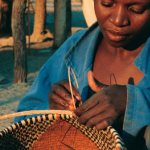
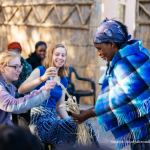
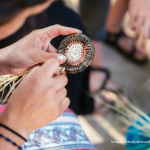
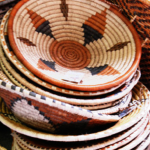
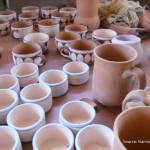
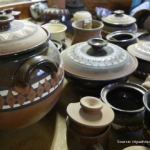
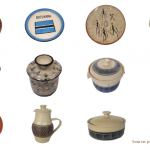
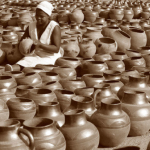
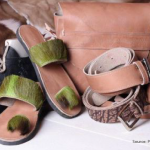
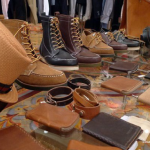

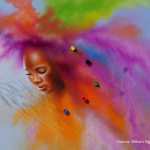
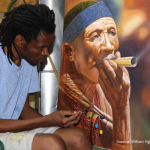
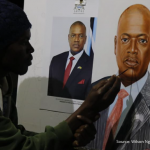
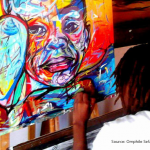
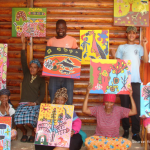
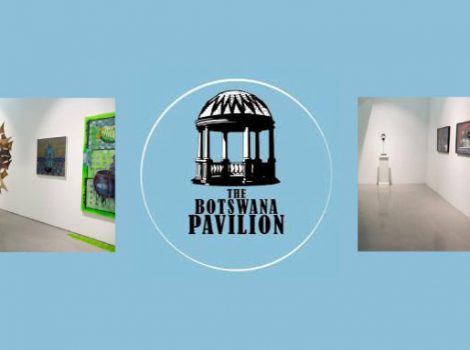

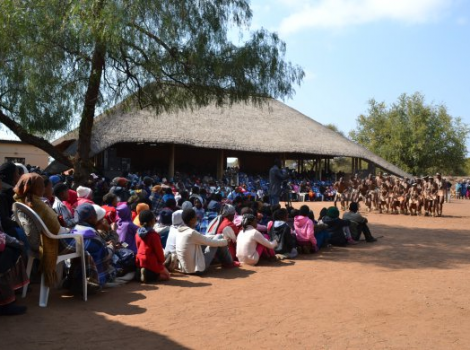
Looking for a butter dish like the one I bought at a nature reserve., made by Oravango Ceramics by Khumbo.
If you send me an email, I will send some pictures.
I am a international research and community engagement artist, who’s interested in visiting and would like to a recommended arts organization that I can meet and visit when I am there.
Thank you.
Yrneh